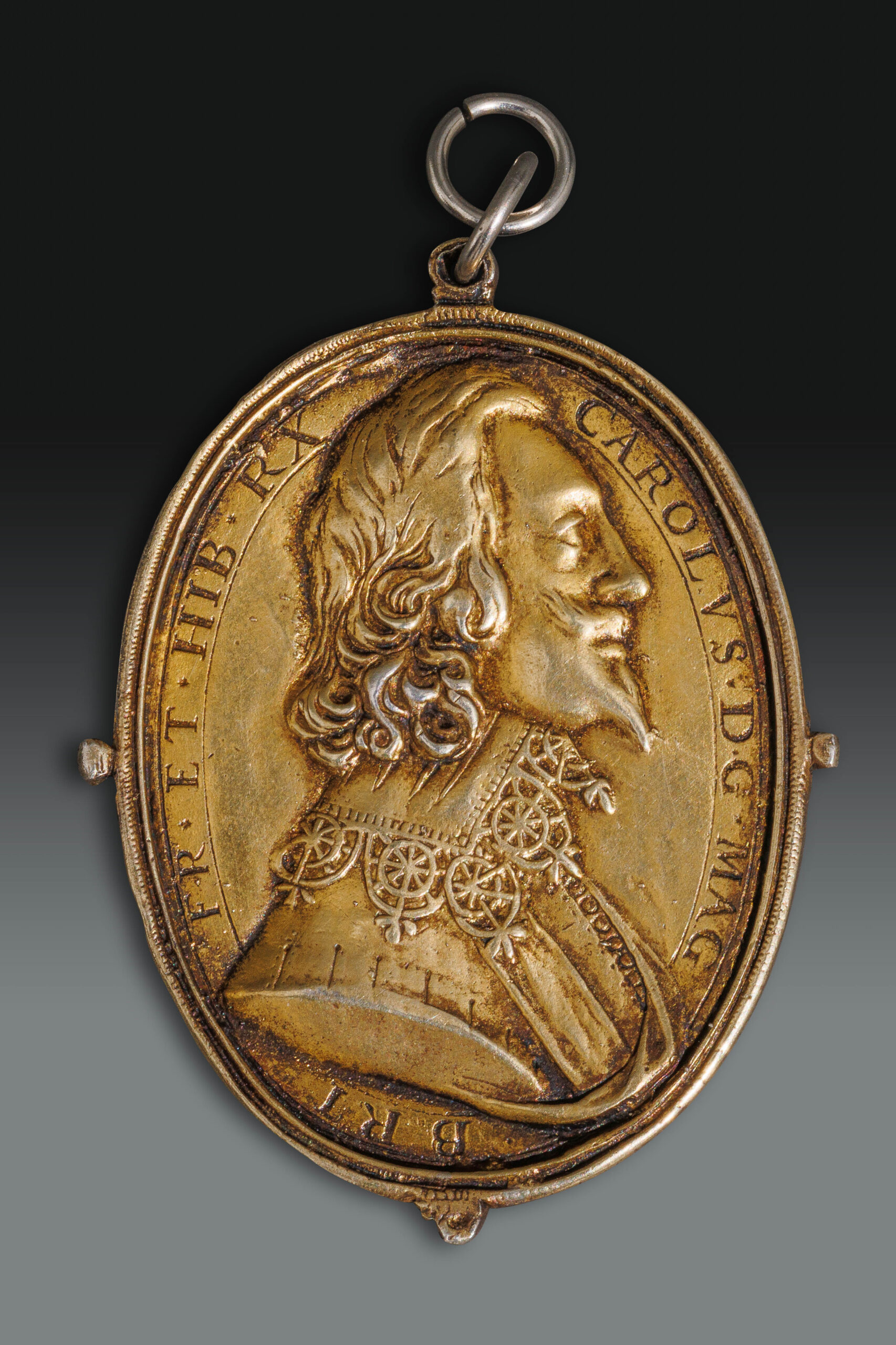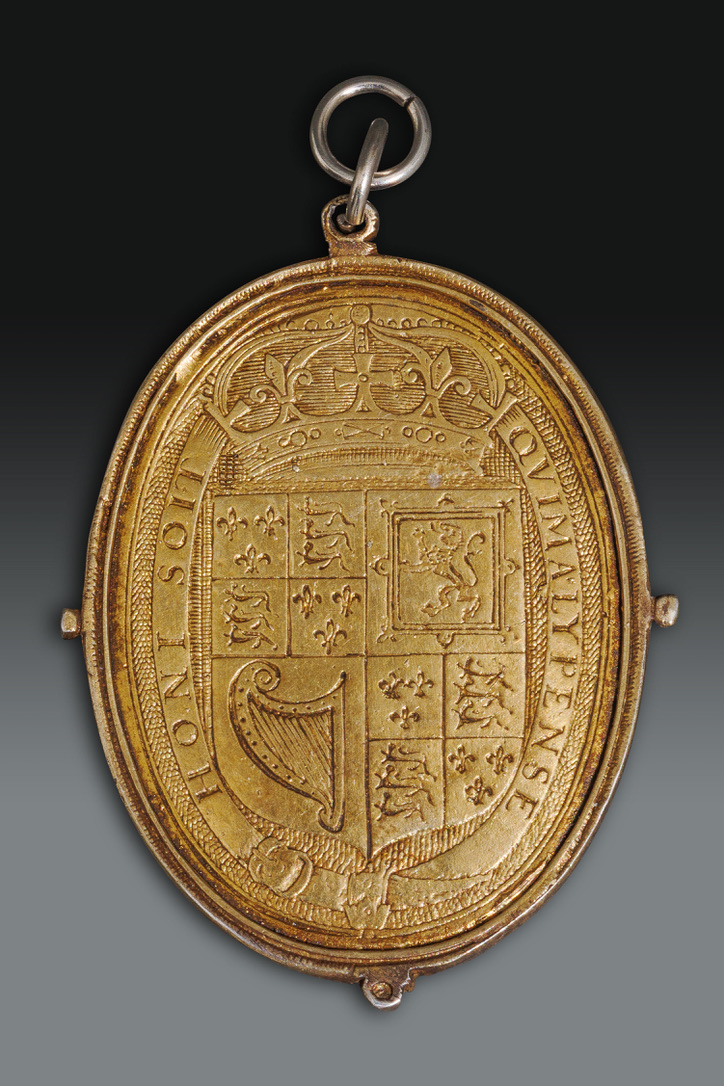

$12,000.00
1 1/4 ins. wide and 1 3/4 ins. high
For questions regarding viewing, shipping, and anything else,
contact us at: [email protected]
Comparative Literature
Helen Farquhar, ‘Portraiture of the Stuarts on the Royalist Badges’, in The British Numismatic Journal, vol.II, 1906
British Museum Medallic illustrations of the history of Great Britain and Ireland to the death of George II (Vol I) 1885
John Pinkerton The Medallic History of England to the Revolution (1790)
Like the other royalist badge in our collection, this fine piece was designed to be a treasured memento of the late King, designed with a suspension loop so that, in theory, it could have been worn upon one’s person. In reality, it would have taken an extraordinary act of defiance to have openly worn a piece like this and would certainly have resulted in death by execution. Therefore it is much more likely that the piece spent most of its early years in a shrine inside a private household.
The image of Charles I on the obverse of this badge is the same one as utilised on our other piece and was designed by Thomas Rawlins (see below). However this particular piece incorporates the royal arms on the reverse and this is a very unusual combination. There do not appear to be any examples of this particular combination in the extensive collection in the British Museum, nor in the current Royal Collection (which does contain several other royalist badges) and Pinkerton’s 1790 Medallic History does not feature this design. There was, however, an example of this model in the Dr Jerome J.Platt Collection of 17th-century medals, a world-leading study collection of pieces of this type that has now been dispersed.
In cataloguing a different example of a royalist badge, the British Museum states that ‘This medal was a badge evidently intended to be worn about the person of friends or partisans of the monarch. They are of various sizes and workmanship, and were executed at various times; some evidently worn as ornamental or honourable decorations conferred for services performed, others to be concealed as tacit memorials of the royal person or cause, where an open avowal of such attachment would have been troublesome or dangerous to the wearer’.
Our piece is in very fine condition with the original gilding of warm lemon colour. The detail throughout is very clear-the portrait of the King is executed in very high relief and the cost of arms, and the multiple textured surfaces surrounding it, are virtually untouched. This is a true collector’s piece in its most desirable state.
Thomas Rawlins
The designer of the badge was Thomas Rawlins, widely regarded as the best medallist working in England in this period but also a true renaissance man with a gift for poetry and writing plays. It is believed that Rawlins was trained by the Frenchman Nicholas Briot at the Royal Mint. His first signed medal dates from 1641 and he became the King’s official engraver of coins and medals at his mint in Oxford from 1644-1646 as well as producing medals such as one given to Sir Robert Welch in 1643. He continued to produce medals for the Royal family and their supporters until 1648, at which stage he was forced to flee to France. After enduring 12 financially precarious years there, he returned to England in triumph in 1660 when he was reappointed as chief engraver at the Royal Mint. He continued in this role until his death in 1670. In this late period he created a privy seal for Ireland and a series of judicial seals for the Welsh counties.
It is hard to think of objects that embody history in quite the same way as the badges produced during this period of political turmoil. They are tiny and remarkable survivors-relics of times past that are both aesthetically stimulating and of real historic significance. This piece deserves to become a treasured heirloom in another family-thankfully now without the threat of persecution accompanying ownership.
Research and essay by Christopher Coles.